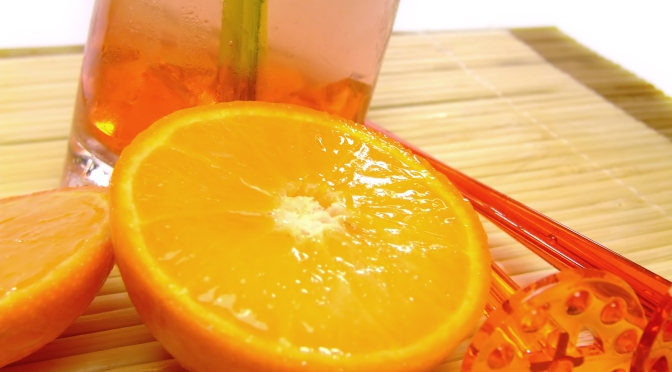Lately I’ve been getting a lot of questions on the basics of supplementation. So, I thought it a good time to add to our FAQs. The following are just a few of the most commonly asked.
I eat lots of fruits and vegetables. Do I really need to take vitamins?
I envy those who somehow manage to get the recommended 5-9 servings of fruits and vegetables a day. So clearly, I am not one despite knowing and believing in the importance of this practice. I also lead a very hectic and at times stressful life that is made possible in part by my partaking of caffeine, an alcoholic bev here and there and, now that it is getting colder, those lovely decadent and forbiddingly rich foods. All reasons why I feel I need a vitamin supplement.
But if you are a relatively healthy person, not taking any medications, consuming limited amounts of caffeine and alcohol, not smoking and easily managing your current lifestyle and stress level, then supplementing additional nutrients is probably unnecessary.
Some other factors for consideration are whether you are a meat and/or fish eater or are strictly a vegetarian. There are some crucial nutrients such as Vitamins A and D that are most abundantly found in animal foods. Additionally unless you are eating most of your fruits and vegetables in their raw forms, you may not be getting all of the nutrients the plant foods have to offer.
Your doctor may know best on this one, and should tell you when you are deficient in any vitamins or minerals. And, supplementation doesn’t have to be a long-term commitment. You may find that it is only appropriate for you at certain times such as a change in seasons, busier and more stressful times like the holidays, or when you feel the onset of a cold or other ailment. You may also find that during these times it’s not all of the vitamins you need to supplement but just a few like A, C and E for immune support.
What is meant by the terms “fat and water-soluble” and what difference do they make with vitamins?
Our basic vitamins are broken into two categories-fat soluble and water-soluble. The fat soluble ones- A, D, E and K-are found within the lipids (fat) of plants and animals. They are transported from our food to our bodies by essential, healthy dietary fats where they can be stored in our own body fat for future use. Because our bodies generally maintain a reserve of the fat soluble vitamins, over supplementation of them without doctor’s direction, consent and supervision is neither necessary nor healthy, especially over extended periods of time. These vitamins may be taken with or without food; but they are best taken before breakfast and/or before bed. You can also take them following a meal containing fatty foods. And although some experts recommend taking them separately from the water-soluble ones, the jury is still out. Some of the fat soluble vitamins even work better when taken with the water-soluble ones, namely A, C and E.
Water soluble vitamins-the B Family and Vitamin C- are found mostly in raw fruits and vegetables, don’t stand up well to heat and other forms of food processing and, in this way, are less stable than fat soluble vitamins. The water-soluble vitamins are not abundantly stored in the body. It easily excretes what it does not need of these. This means we need to maintain a consistent daily intake of them and can generally take them in doses well over the recommended daily allowance without doing harm. The water-soluble vitamins are also best taken with food because they need to be dissolved and digested to be used by the body.
What’s the best way to take my vitamins-pills, powders or liquid?
This really depends on your individual system, more specifically your digestive system. But generally speaking the body has an easier time breaking down and absorbing powders and liquids than it does hard tablets. Many experts doubt even a strong digestive system’s ability to effectively access and absorb the nutrients cased in large hard tablets. The powder filled capsules are great because they are easily digested and you usually don’t have to suffer through tasting them to take them. Vegetarians however should check that the capsule is plant-based and not made of animal gelatin. There are also Kosher and Halal capsules available now. New Chapter is one manufacturer that provides these options. Parents of younger children may want to use a liquid vitamin supplement for their kids because they are most easily swallowed.
What is the shelf life of a liquid or powdered supplement once you’ve opened it and how should you store them?
First things first, always check the supplement’s container for an expiration date before you buy it. My understanding is that unopened, they’ll last a couple of months beyond that date. Once opened, I recommend using liquids, powders, whole food sourced, organic and raw supplements within their supply period. If it is a month supply, then try to use it within a month. Unless a supplement has changed colors, smells sour or rancid or has changed in its consistency it probably hasn’t “gone bad”, but the nutrients contained within it may have lost some potency.
For proper storage of a supplement, also check the container. Most pills should be stored in a cool dry place. If the nutrients are light-sensitive the manufacturer should have packaged them in dark plastic or glass containers. Live and raw supplements can usually be refrigerated safely, and I prefer to do the same for liquids unless otherwise directed by the manufacturer.
With powders like our beloved Green Vibrance, I actually had the privilege of speaking with their company rep years ago and he advised me to store the product in the freezer to extend its shelf life. Even though Green Vibrance is a freeze-dried supplement, making freezer storage logical, I now store all powdered vitamins in the freezer for safe keeping.
In the interest of time and respect for your other commitments-yes I know you have a life that does not evolve around the world of supplements like SOME people…well…me, I will pause here for now and continue next week with more on vitamin allies and enemies. Oh the saga!
Until then, Take Care and BeWell!
Related articles
- Vitamins and minerals – health information from Bupa Health Insurance (bupa.com.au)
- Nutri-Med Logic Corp Says Over Supplementation of Vitamin D is as Troubling as its Deficiency (prweb.com)
- Role of Cholesterol in our health (medicareworld.wordpress.com)





 BioSil uses forms of
BioSil uses forms of 















